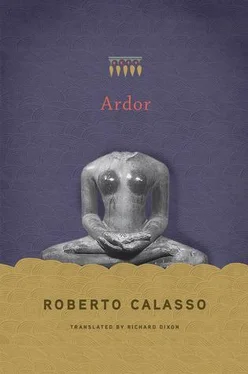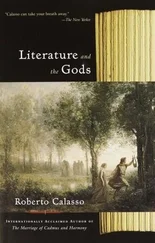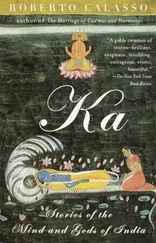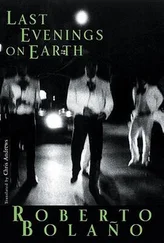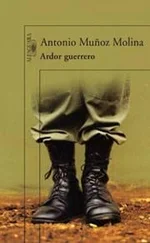It was not only Agni who was gripped by terror and fled, but also Indra, after having hurled the thunderbolt at Vṛtra. We find at a certain point that even Śiva disappeared. Not through terror, of course—Śiva can never be accused of feeling terror — but certainly as a refusal, a rejection of something that could also be the world. Indra even yields at the moment that ought to mark his triumph, the completion of his enterprise. In front of Vṛtra, Indra feels weaker, he doesn’t trust his own thunderbolt. And the one who goes looking for him, to persuade him to return, is Agni, another fugitive, who in turn had not felt able to assume the role of messenger of the sacrifice. It might be said that all these gods occasionally feel paralyzed when faced with the task of existence — and of having a purpose. Such moments were — perhaps — the model for the radical rejection of the world that would later emerge in many forms among men in India.
* * *
“After which he should cast off the vow, saying: ‘Now I am he that I really am.’” The sacrifice is complete. Hundreds of prescribed gestures have been performed. Hundreds of formulas have been spoken. What is to be done? It’s a tricky situation. The sacrifice has to be treated like a skittish animal: first remove its yoke, which no longer has a purpose, and at the same time pour water — the water described as praṇītāḥ , “carried forth”—because “the sacrifice, while it is unyoked, backing away could injure the sacrificer.”
The sacrificer then has to think about himself. He too has a yoke to remove: the vow. How does he express it? The sacrificer knows he ought to say: “I pass from truth to untruth,” to describe exactly what he is doing. But it would be inappropriate, unseemly to acknowledge this, after the fervor of the liturgy. So he resorts to a formula that might seem tautological and yet is discreetly, humbly allusive: “Now I am he that I really am.” In other words: an ordinary man who knows he is being ignored by the gods. And he returns with a certain relief — though he doesn’t dare say it — to an anonymous, undisciplined, negligible life. But a life freed from the constraint of meaning.
What is the underlying presumption? Truth is an unnatural state for man. Man enters such a state only through the artificiality of the vow and the long sequence of actions (rites) connected to it. But he cannot remain there. The procedure for leaving the vow is just as important and delicate as that for entering it. In some way, man yearns to return to untruth, just as he yearns for sleep after the strain of a long vigil. Truth, whose name ( satya ) refers to “that which is” ( sat ), is an impermanent state for man, toward which he aspires and from which he slips away. Normality, the constant state of being, is in untruth, which immediately reenvelops man once he leaves the vow , the sacrificial action.
* * *
The most important step in the task of setting up the fires is the attempt to transfer the fires from the outside world to the remotest depth of the sacrificer’s body. The whole doctrine of yoga rests on this operation, since in the beginning “the fires surely are these breaths: āhavanīya and gārhapatya are the exhaling and the inhaling.” The origin of this difficult transposition was an episode in the war between the Devas and Asuras. The Devas were not yet gods then — and were therefore mortals, as the Asuras were. Between the two enemy forces there was only one immortal being — Agni — to whom everyone turned. So the Devas thought of infusing him into themselves. They let themselves be invaded by that immortal being — and so gained the advantage over the Asuras. It was a question of prefixes: they had chosen ā-dhā- , “to establish inside,” rather than ni-dhā- , “establish below” (in the outside world, where grass is burned and meat is cooked), to which the Asuras were stubbornly attached. From then on, it became much easier to talk about inside and outside, about what happens visibly in the world and what happens invisibly in each person. Tending the fire was a single action that could just as well be carried out sprinkling butter on the flames or speaking words of truth. As Aruṇa Aupaveśi said one day: “Worship, above all, is truthfulness.”
* * *
There is life when something is still also something else. There is death when something is only itself, a rigid tautology. This was one of the implications of the doctrine transmitted to Śvetaketu and his father, Uddālaka, by the king of the Pañcālas. That day, a warrior instructed a brahmin master and his son. The king didn’t refrain from pointing out how unusual the event was. Not only was Uddālaka unfamiliar with the doctrine, but — said the king—“this knowledge, before you, had never reached the brahmins.”
And yet Uddālaka had taught his son the doctrine that goes beyond. But the path of the esoteric is endless. Now it was for Uddālaka to present himself as a disciple, a brahmacārin just like his son. Each time, it was a question of starting over again. And it was he himself who suggested this. “We shall go back down and present ourselves as disciples.”
There are two versions of what happened that day, one in the Chāndogya Upaniṣad , the other in the Bṛhadāraṇyaka Upaniṣad. They match each other, but with small, telling variations. The five questions put to Śvetaketu, not by a king but by one of his own followers, and which Śvetaketu was unable to answer, mostly related to the two ways that open up after death: the “way of the gods,” devayāna , and the “way of the ancestors,” pitṛyāṇa. But they also included a strange, apparently unrelated, question: “Do you know how, at the fifth oblation, the waters take on a human voice?”
In order to explain what ways there are for leaving the world and how they are reached, the king of the Pañcālas had first to explain how the world is made, starting with the celestial world. “That world,” he said, was made of fire. But rain, earth, man, and woman are made of the same element, which is also a god: Agni. All are made of fire.
He then had to describe what fire is made of: logs, smoke, flame, embers, sparks. To explain how the celestial world, rain, earth, man, and woman were fire, he had to show in what way they were connected to each of their parts. The thought that operates by way of nexuses, correspondences, bandhus , is exacting, it does not allow for vagueness. And so, this time, man and woman appeared in the vision of the king of the Pañcālas: “In truth, O Gautama [as Uddālaka was often called], man is Agni: words are the logs, breath is the smoke, the tongue the flame, the eye the embers, the ear the sparks.” Certain words in the Bṛhadāraṇyaka Upaniṣad version vary, but the essential nexuses are confirmed: “The word is the flame, the eye the embers.”
As for the woman, her correspondence with the fire was entirely sexual: “Logs are her womb, her attraction to man the smoke, her vagina the flame, the embers coitus, the sparks pleasure.” An erotic compendium. But we should not think that the Vedic vision of women is so limited, despite it being so acute. The point was this: the equivalences with Agni, relating in order to the celestial world, rain, earth, man, woman, were at the same time a sequence of oblations to Agni — and the woman served to make it possible to pass to the fifth oblation, for it is in the woman’s fire that “the gods offer the seed; from that offering man is born.” And only at this point — after the fifth oblation — can we understand what the answer was to the mysterious question put to Śvetaketu: “At the moment of what oblation do the waters take on human language, do they rise up and speak?” Śvetaketu’s reply ought to have been: at the fifth oblation, because it is then that the waters protect the embryo for several months, until they become the voice of the human being that is born. It all fitted together. Not only the nexuses, the correspondences with fire and its constituent parts, but also — no less important — with the ritual order, therefore with the order of the oblations, which are each linked to the other like a sequence of equations.
Читать дальше
